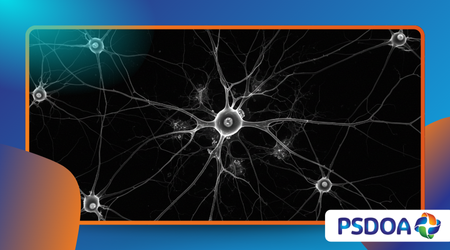The Discovery of Mirror Neurons and Human Empathy

In the early 1990s, a group of Italian neuroscientists observed something that would reshape how we understand emotion, learning, and human connection.
Anúncios
While studying monkey brains, they noticed neurons firing not only when the monkeys performed an action, but also when they observed the same action performed by someone else.
These cells were later named mirror neurons, and their discovery opened a new window into the science of empathy.
How do we understand another person’s joy or pain without experiencing it ourselves? Mirror neurons may hold part of that answer.
A Chance Observation
At the University of Parma, Giacomo Rizzolatti and his team were studying the motor cortex of macaque monkeys. They were interested in how the brain controls movement.
Anúncios
But during an experiment, something unexpected happened: a monkey’s neuron fired when a researcher reached for a peanut—an action the monkey had only watched, not performed.
At first, it seemed like an error. But repetition proved otherwise. The monkey’s brain responded as though it were performing the action itself. The neuron “mirrored” the observed behavior.
Further investigation revealed a pattern. These neurons were not just passive responders; they were active participants in observation.
Each time a familiar action was seen, the same motor pathway in the brain lit up. It was as if the brain didn’t differentiate between seeing and doing. This raised powerful questions about how experience is encoded and shared.
The concept of mirror neurons suggested a deep biological basis for learning by observation, empathy, and social understanding. It was no longer just about movement—it was about minds resonating across space, reflecting one another’s actions with remarkable fidelity.
This wasn’t just imitation. It was internal simulation—evidence that the brain reflects more than intention. It reflects connection.
Read also: The Psychology of Memory: Why We Forget and How to Remember
From Monkeys to Humans
Follow-up studies soon revealed that humans have similar neurons. Brain imaging showed that watching someone perform an action—like picking up a cup, or smiling—activated regions in the observer’s brain tied to motor control and emotion.
Our brains, it seemed, were wired not just to see, but to feel what others experienced.
This neural resonance helps explain why we flinch when we see someone fall, or smile reflexively when someone else does. It offers a biological basis for empathy, mimicry, and even language acquisition.
Mirror neurons blur the line between self and other.
Beyond Action: The Roots of Emotion
While initial studies focused on movement, later research suggested mirror neurons respond to emotional expressions too. Observing grief, joy, or fear lights up similar regions in the observer’s brain. This could be why children instinctively copy facial expressions, or why group emotions often feel contagious.
Empathy, long considered abstract or philosophical, now had visible roots in brain activity. The implications rippled through neuroscience, psychology, and even education.
Mirror Neurons in Everyday Life
Understanding mirror neurons changes how we see human interaction. A teacher’s enthusiasm can energize a classroom.
A parent’s calm presence can soothe a child. Leaders influence not just through words, but through the emotional states they project. Even in silence, we transmit feelings, postures, and energy that others unconsciously absorb.
Social bonding, group dynamics, and non-verbal communication all carry a neural signature shaped by mirroring.
Controversy and Caution
Not all scientists agree on the scope of mirror neurons. Some argue that their role in empathy is overstated or misinterpreted.
Brain processes are complex, and empathy involves multiple regions—not just mirror systems. Critics warn against oversimplifying human behavior based on isolated neuron activity.
Still, few dispute the core insight: our brains are deeply social. We’re built to connect.
Implications for Autism and Therapy
Some researchers suggest that atypical mirror neuron functioning could play a role in conditions like autism, where interpreting social cues is often difficult.
Others explore how mirror-based techniques might support therapies for trauma, anxiety, or even motor rehabilitation after strokes.
The idea is simple: by watching others heal, move, or express emotion, the brain might be retrained to do the same.
FAQ
What are mirror neurons?
Mirror neurons are brain cells that activate both when we perform an action and when we observe someone else performing that action.
How were they discovered?
They were first identified in macaque monkeys by accident during motor control studies in the early 1990s.
Do humans have mirror neurons?
Yes. Brain imaging shows similar activity patterns in humans when observing or performing actions and emotions.
What role do they play in empathy?
They may help us understand and feel others’ emotions by simulating those experiences internally.
Are mirror neurons involved in therapy?
Some therapeutic methods use the concept of mirroring to support emotional healing and physical recovery.
The discovery of mirror neurons reminds us that connection isn’t just a concept—it’s embedded in our biology. Our brains echo the lives around us, making empathy not just possible, but inevitable.
It suggests that the divide between you and me is narrower than we think. Each gesture we observe, each emotion we witness, each movement we mimic—these are shared across invisible neural pathways. Mirror neurons invite us to reflect, not only literally, but relationally.
